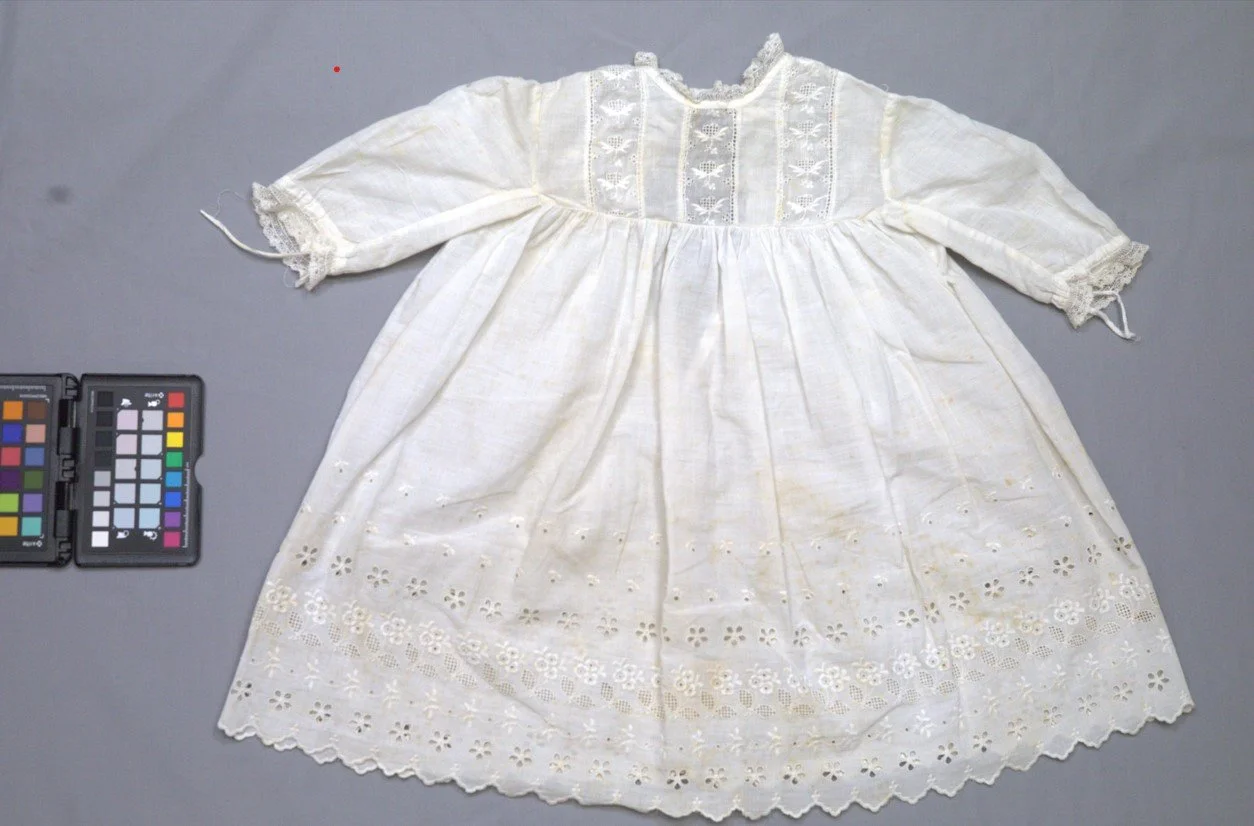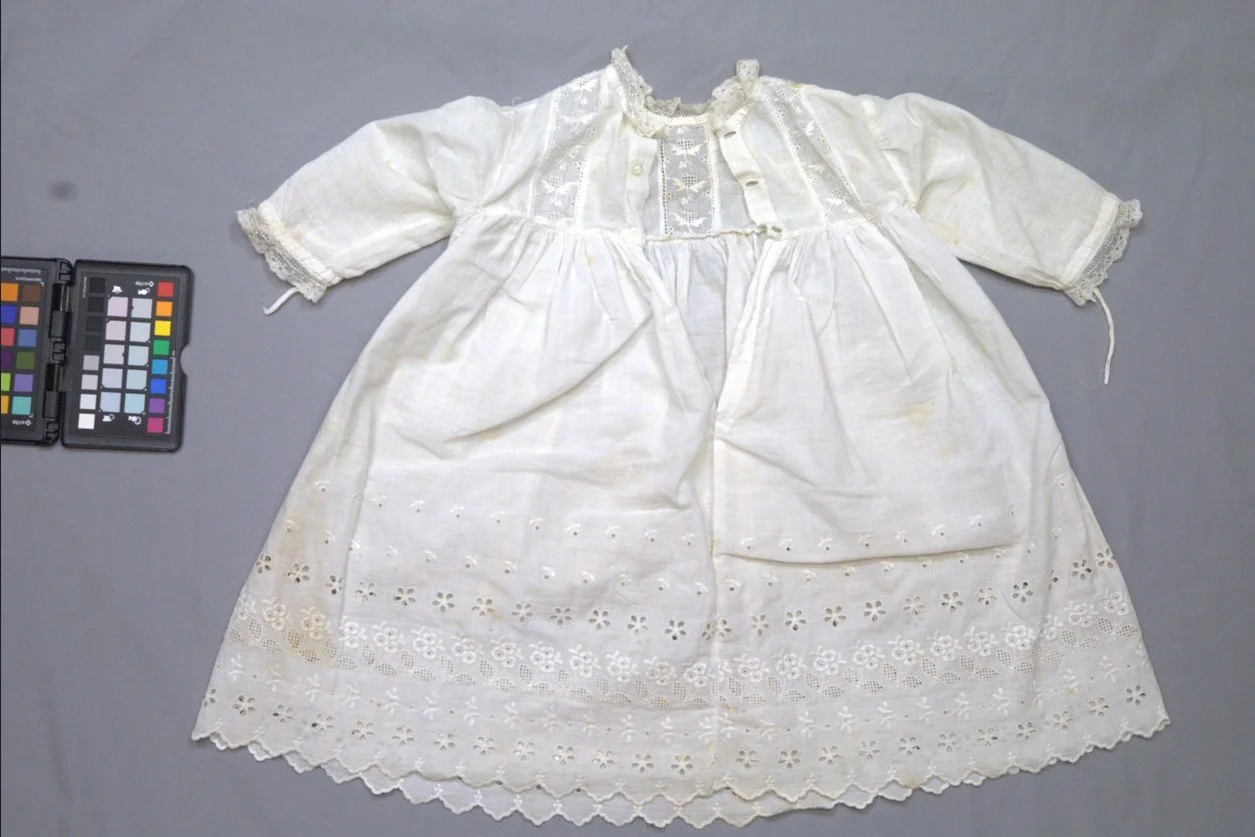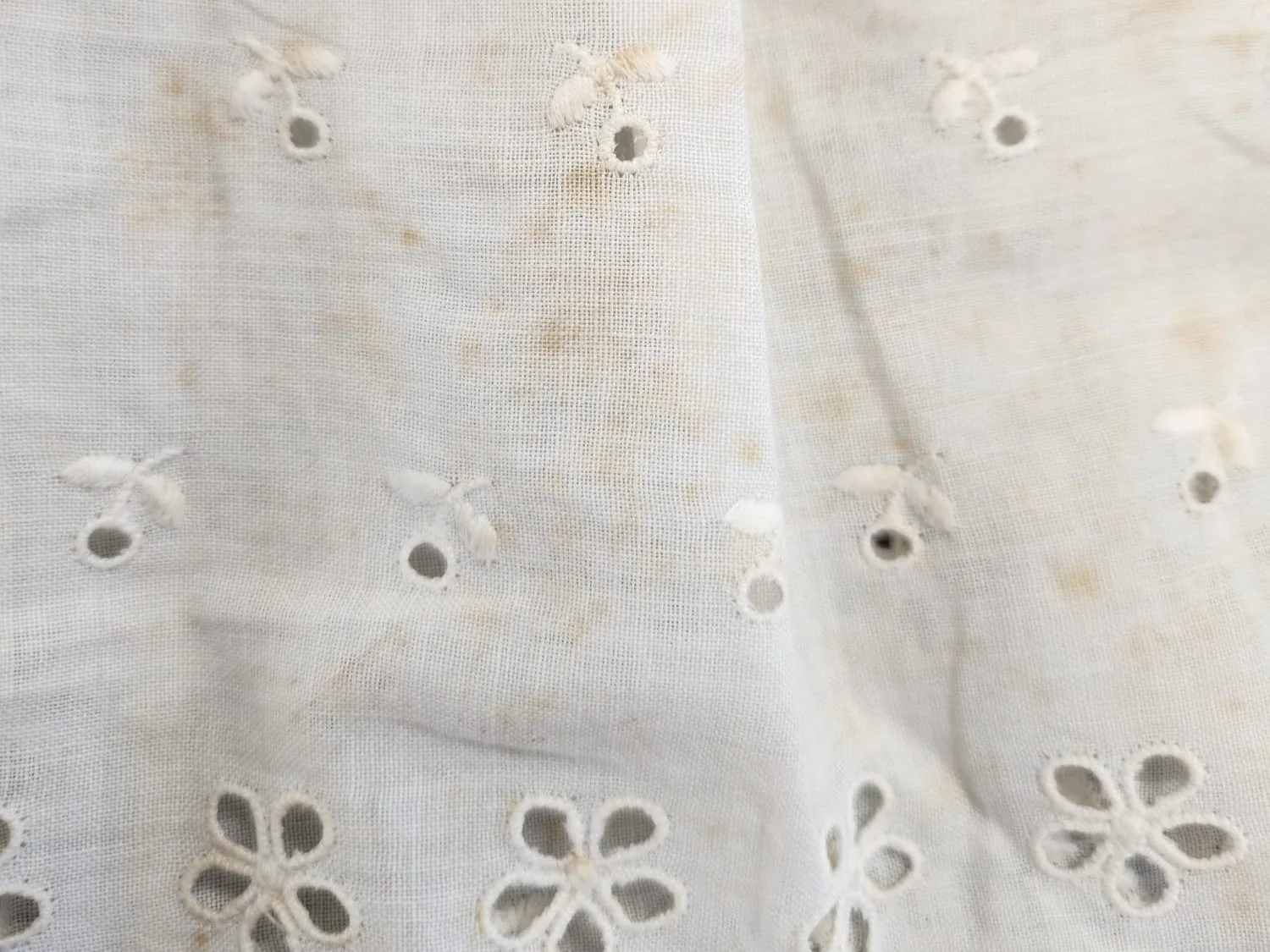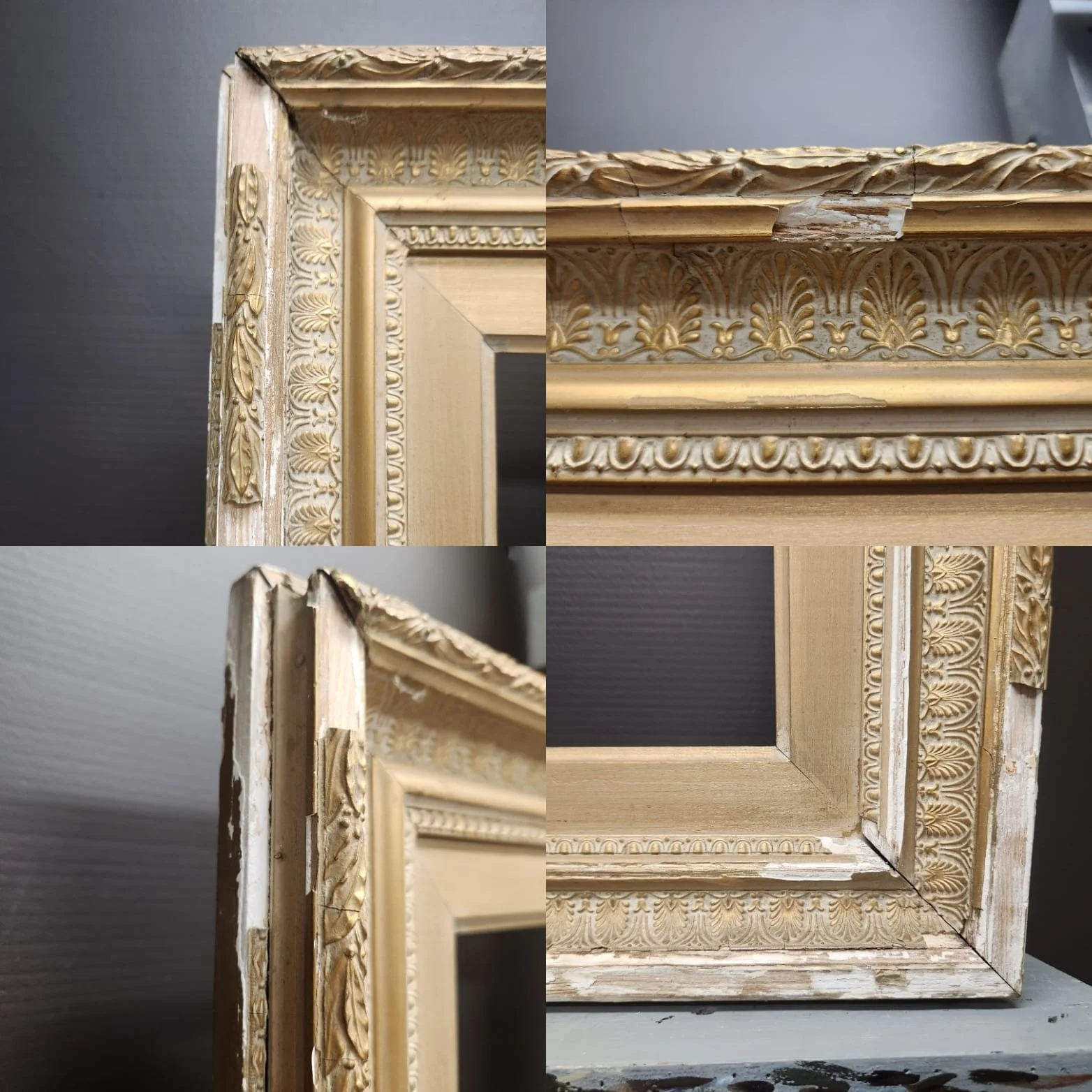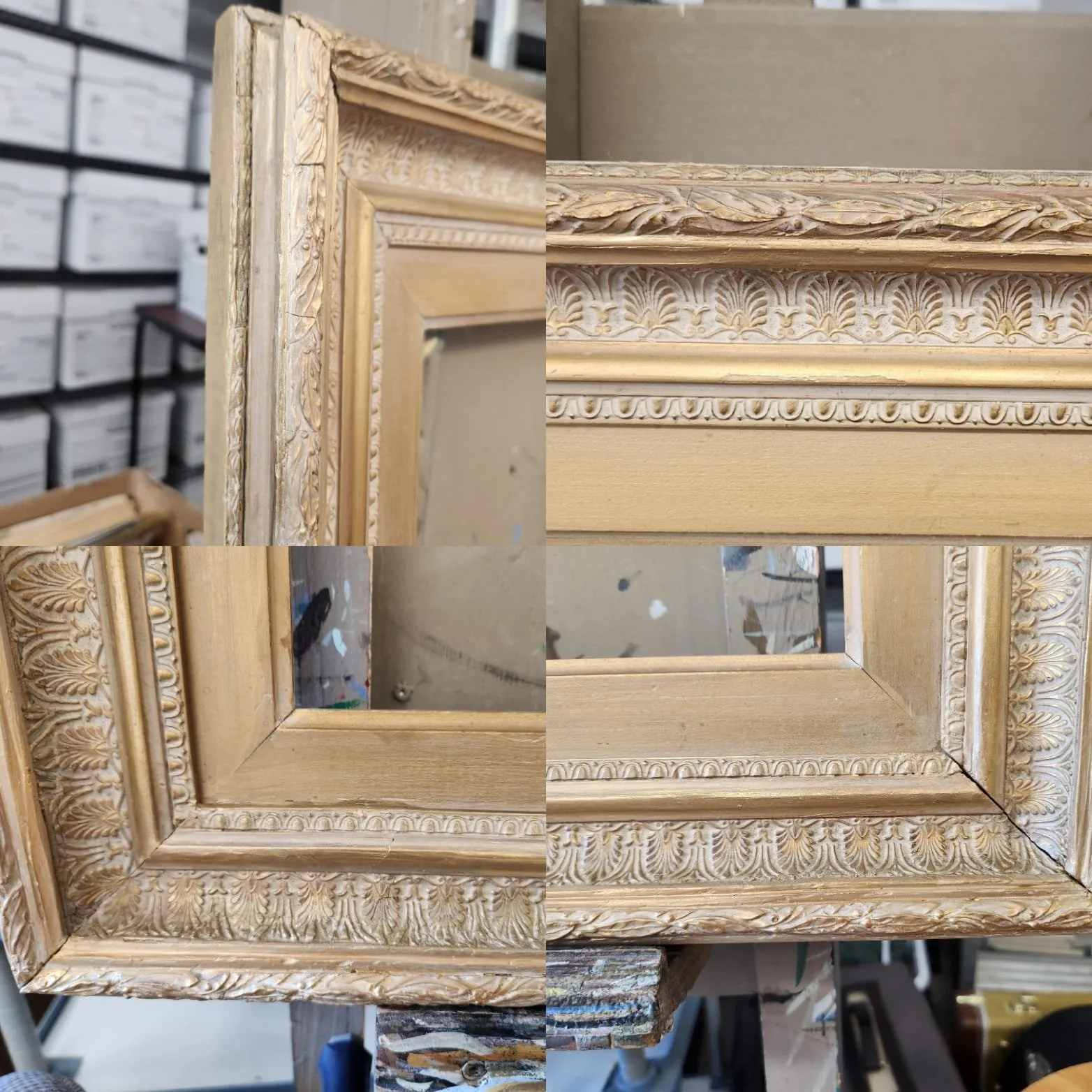
Art Conservation Portfolio
Jennifer is an emerging art and cultural heritage conservator with experience working with ceramics, metal, wood, leather, textiles, photographs, paper and paintings. She is currently exploring all materials but has a special interest in paintings, works of art on paper and reproductions.
Brass Bullet Casing
(Image left: before treatment, image right: after treatment). This object was an ammunition cartridge case from a bullet, originating from a Bofors cannon, from a private collector. Before treatment, the brass was very dull. The treatment for this object was to polish with fine-grain powdered calcium carbonate mixed with reverse osmosis water and pig cloth and cotton swabs, in a circular motion and then rinsed with reverse osmosis water to remove excess calcium carbonate and was allowed to air dry on a paper towel.
Ceramic Plate
(Image left: post breakage, image middle: mapping with painter’s tape, image right: after repair). This ceramic-ware plate was broken and then repaired with Polaroid B-72. A loss-sherd was discarded and recreated using Plaster of Paris. The plaster was then painted with acrylic paint to replicate the loss.
Wooden Violin Case
(Image top left: before treatment, image top right: after treatment). This wooden violin case had generalized chalking of the black wood finish as well as excessive wear. There was a complete crack on the lid of the case. The treatment for this object consisted of generalized surface cleaning with a polyurethane sponge and inpainting on the surface scratches. The crack was filled with Balsa wood and inpainted.
(Image bottom left: before treatment of the paper/textile, image bottom right: after treatment of the paper/textile). The paper lining of the violin case had areas of soiling and tide lines from water exposure, as well as areas of flaking. The textile was generally stable but had some areas of separation and was covered in debris. The inside of the case was vacuumed, and then the tide lines were reduced. Flaking areas were adhered with wheat starch paste, and the textile was adhered with Jade 403. A colourfast test revealed the textile dye was fugitive; therefore, no solvents were introduced.
(Image left: before treatment, image right: after treatment). This object is a leather-wrapped pair of bison or steer horns on a pentagonal wooden plaque. There was an abrasion on the leather surface. The treatment for this object was: generalized surface cleaning with a polyurethane sponge, casting the leather surface with sausage skin to obtain the texture with Easy-Mold, cutting the cast to size and inpainting it with acrylic paint and then adhering the cast patch to the artifact with Lascaux 303.
Leather and Mounted Horn Object
(Image left: before treatment, image right: after treatment). This object is an iron rasp, used by farriers to shape and trim the hooves of farm animals. Before treatment, the rasp was very corroded and there was internal debris within the complete crack on the handle. The treatment for this object was to use a bamboo skewer to remove the corrosion as well as using a 3B graphite pencil. Manual removal of the debris was completed with dental tools and tweezers.
Iron Rasp
Child’s Dress
(Images top left and middle: before treatment front and back, image top right: detail shot of corrosion staining/embroidery, images bottom left and middle: after treatment front and back, image bottom right: detail shot of treated corrosion staining). This cotton embroidered child’s dress has evidence of wood acid staining and yellowing due to photoxidation. The treatment for this object was to dry clean it with a vaccuum on low-suction with a nylon screen. The object was then washed in a reverse osmosis water bath with Orvus paste.
19th Century Wood Frame
(Accompanies “Loch Lomond” by John B. McDonald)
(Image top left: before treatment, image top right: before treatment, detail shots of loss/damage). This wood frame had experienced water damage as well as general losses due to age and improper storage. There were many areas of missing ornamentation, none of which were impacting the structural integrity of the frame. The frame was first dry-cleaned with smoke sponges and brushes to remove accumulated dust. Wood filler was used to fill in losses, and sandpaper was used to match the existing curvature. A two-part silicone mold was used to cast the existing ornament, to which Plaster of Paris was used to make casts. The casts were adhered with PVA, and acrylic paint was used to reintegrate the fills to the existing. Portions of the ornament were unable to be cast due to the curvature and delicate nature of the plaster. To combat this, these areas were hand-carved before retouching with a dental pick. The hanging hardware was replaced, and the painting (see “Loch Lomond” below) was reinstalled.
(Image bottom left: after treatment, image bottom right: after treatment detail shots).
“Loch Lomond” Oil Painting by John B. McDonald
COMING SOON















